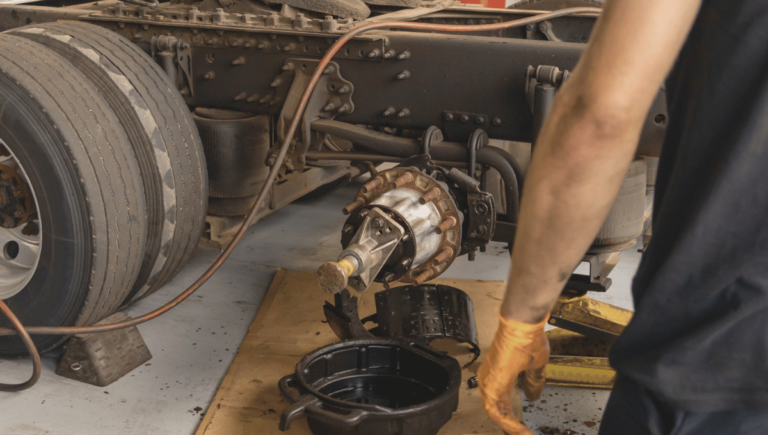Can Low Tire Pressure Cause Steering Wheel Shaking? Find Out!
Low tire pressure can cause the steering wheel shaking due to uneven tire wear and decreased stability. This issue can lead to unsafe driving conditions and should be addressed promptly.
Proper tire maintenance is essential for a smooth and safe driving experience. In this blog post, we will explore the impact of low tire pressure on steering wheel vibrations and provide tips on how to prevent and address this issue.
Understanding the connection between tire pressure and steering wheel vibrations can help drivers maintain their vehicles and ensure a comfortable and safe ride. Let’s dive into the details and learn more about this common automotive issue.
Introduction To Tire Pressure And Steering Issues
Common Symptoms Of Low Tire Pressure
When tires are underinflated, several warning signs might become evident. Common symptoms of low tire pressure include increased fuel consumption, uneven tire wear, and longer braking distances. Additionally, drivers may notice decreased vehicle handling and an increased risk of hydroplaning during wet conditions.

The Relationship Between Tire Pressure And Vehicle Handling
Proper tire pressure is crucial for maintaining optimal vehicle handling. Low tire pressure can lead to a range of steering issues, including steering wheel vibrations and an overall decrease in responsiveness. This can compromise the vehicle’s stability and safety, especially when navigating corners or uneven road surfaces.
The Mechanics Behind Steering Wheel Vibrations
Low tire pressure can indeed cause your steering wheel to shake. When tires are not properly inflated, it can lead to vibrations due to uneven weight distribution. Keeping tires at the recommended pressure levels can help eliminate steering wheel vibrations.
How Steering Systems Work
The steering system is an essential component of any vehicle. It allows the driver to control the direction of the vehicle by turning the wheels. In a typical steering system, the steering wheel is connected to a series of components that work together to turn the wheels. These components include the steering column, steering gear, tie rods, and steering knuckles. When the driver turns the steering wheel, the steering gear moves the tie rods, which turn the wheels.
Factors That Lead To Steering Wheel Shake
One of the most common issues that drivers experience with their steering system is steering wheel vibrations. These vibrations can be caused by several factors, including:
- Low tire pressure
- Unbalanced tires
- Worn or damaged suspension components
- Wheel misalignment
- Warped brake rotors
When the steering wheel shakes, it can be a disconcerting experience for the driver. In most cases, the shaking is caused by a problem with the tires. Low tire pressure is a common cause of steering wheel vibrations. When the tire pressure is too low, the tire becomes less stable and can cause the vehicle to vibrate. Additionally, unbalanced tires can also cause the steering wheel to shake. When a tire is unbalanced, it can cause the wheel to wobble, which can lead to vibrations.
Overall, it’s important to address any issues with the steering system as soon as possible to avoid further damage or safety hazards. Regular maintenance and inspections can help prevent these issues from occurring in the first place.
Low Tire Pressure: A Closer Look
Explore how low tire pressure can lead to a shaky steering wheel. Low tire pressure affects handling and stability, potentially causing steering wheel vibrations. Regularly checking and maintaining proper tire pressure is crucial for safe and smooth driving.

Low tire pressure can cause a variety of issues, including steering wheel shake. It’s important to understand the effects of underinflation on tires and the risks associated with driving on low tire pressure. Let’s take a closer look.
Effects Of Underinflation On Tires
When tires are underinflated, the sidewalls flex more than they should, causing the tire to flatten out. This leads to increased rolling resistance, which can cause the tire to overheat and wear out more quickly. Additionally, low tire pressure can cause the tread to wear unevenly, leading to poor handling and reduced traction.
Risks Associated With Driving On Low Tire Pressure
Driving on low tire pressure can be dangerous. It can cause poor handling, reduced traction, and longer stopping distances, which can increase the risk of accidents. Additionally, low tire pressure can cause blowouts, which can be catastrophic, especially at high speeds. It’s important to check your tire pressure regularly and keep it at the recommended level for your vehicle.
In conclusion, low tire pressure can cause a variety of problems, including steering wheel shake. By understanding the effects of underinflation on tires and the risks associated with driving on low tire pressure, you can take steps to ensure your safety on the road. Remember to check your tire pressure regularly and keep it at the recommended level.
Diagnosing Steering Wheel Shaking
Low tire pressure can indeed cause the steering wheel to shake. When the tire pressure is too low, it can lead to uneven tire wear and imbalance, resulting in the steering wheel shaking. Regularly checking and maintaining proper tire pressure can help prevent this issue and ensure a smoother driving experience.

Steps To Identify The Cause Of The Problem
When your steering wheel starts to shake, it can be a cause for concern. However, diagnosing the exact cause of the problem can help you address it effectively. Here are a few steps you can take to identify the cause of the steering wheel shaking:
- Check your tire pressure: One of the most common causes of steering wheel shaking is low tire pressure. Use a tire pressure gauge to measure the pressure in each tire. If any tire has significantly lower pressure than the recommended levels, it may be the culprit behind the shaking.
- Inspect your tires for damage: Examine your tires for any signs of damage, such as cuts, bulges, or uneven wear patterns. Damaged tires can lead to imbalances and vibrations in the steering wheel.
- Look for wheel misalignment: Improper wheel alignment can also cause steering wheel shaking. Visually inspect your wheels to see if they are misaligned or if any of them appear to be pointing in a different direction than the others.
- Check for worn-out suspension components: Faulty suspension components, such as worn-out shock absorbers or struts, can contribute to steering wheel vibrations. Look for signs of damage or wear on these components.
- Inspect your brakes: A warped or unevenly worn brake rotor can cause the steering wheel to shake when you apply the brakes. Check your brake rotors for any signs of damage or unevenness.
By following these steps, you can narrow down the possible causes of the steering wheel shaking and have a better understanding of what might be causing the issue.
When To Seek Professional Help
In some cases, diagnosing and fixing the cause of steering wheel shaking may require the expertise of a professional mechanic. Here are a few situations where it’s advisable to seek professional help:
- If you are unable to identify the cause of the steering wheel shaking using the steps mentioned above.
- If you lack the necessary tools or knowledge to inspect and repair the various components of your vehicle.
- If you notice other unusual symptoms, such as excessive vibration at high speeds or difficulty in steering.
- If you have attempted to fix the issue yourself but the steering wheel shaking persists.
A professional mechanic will have the expertise and experience to accurately diagnose the problem and recommend the appropriate repairs. Remember, it’s important to address steering wheel shaking promptly as it can affect your vehicle’s handling and safety.
The Impact Of Tire Pressure On Vehicle Dynamics
Low tire pressure can indeed cause the steering wheel to shake. When tires are not properly inflated, it affects the vehicle’s dynamics, leading to vibrations and an unstable steering experience. Maintaining the correct tire pressure is crucial for a smooth and safe driving experience.
Handling And Stability At Different Tire Pressures
Proper tire pressure is crucial for maintaining optimal handling and stability while driving. Whether your tires are overinflated or underinflated, it can significantly impact your vehicle’s dynamics and overall driving experience.
When tires are underinflated, they tend to have a larger contact patch with the road surface. This increased contact results in more friction, making it harder for the tires to roll smoothly. As a consequence, you may experience a decrease in handling precision and responsiveness.
On the other hand, overinflated tires have a smaller contact patch. This reduces the amount of grip they have on the road, leading to decreased traction and stability. The lack of proper grip can cause the steering wheel to shake or vibrate, especially when navigating corners or uneven surfaces.
It’s important to note that tire pressure affects not only the handling of your vehicle but also its stability. When tires are improperly inflated, it can lead to an imbalance in weight distribution, causing the vehicle to feel unsteady and increasing the risk of accidents.
The Role Of Tire Pressure In Road Safety
Maintaining the correct tire pressure is crucial for ensuring road safety. By adhering to the recommended tire pressure levels provided by the vehicle manufacturer, you can mitigate potential risks and enhance overall safety during your travels.
Here are some key reasons why tire pressure plays a significant role in road safety:
- Improved handling and maneuverability: Properly inflated tires allow for better control and maneuverability, enabling you to navigate various road conditions with ease.
- Enhanced braking performance: Adequate tire pressure ensures optimal contact between the tires and the road, improving braking efficiency and reducing the risk of skidding or hydroplaning.
- Reduced tire wear and tear: Maintaining the correct tire pressure helps distribute the vehicle’s weight evenly across the tire surface, reducing uneven wear and extending the lifespan of your tires.
- Increased fuel efficiency: Underinflated tires create more resistance, forcing the engine to work harder and consume more fuel. Proper tire pressure can help optimize fuel efficiency, saving you money in the long run.
- Minimized risk of blowouts: Overinflated tires are more prone to blowouts due to increased stress on the tire walls. By keeping your tires properly inflated, you can reduce the risk of sudden tire failure while driving.
Regularly checking and maintaining the correct tire pressure is a simple yet essential step in ensuring your safety and the safety of others on the road. By doing so, you can enjoy a smoother, more stable driving experience while minimizing the risk of accidents caused by tire-related issues.
Addressing Low Tire Pressure
Low tire pressure can lead to a variety of issues, including causing the steering wheel to shake. Addressing low tire pressure is crucial for ensuring a smooth and safe driving experience. In this section, we’ll explore how to properly inflate your tires and maintain optimal tire pressure to prevent steering wheel shaking and other potential problems.

How To Properly Inflate Your Tires
Properly inflating your tires is essential for maintaining optimal tire pressure and preventing steering wheel shaking. Follow these steps to ensure your tires are properly inflated:
- Check the recommended tire pressure listed in your vehicle’s owner’s manual or on the sticker inside the driver’s side door.
- Use a reliable tire pressure gauge to measure the current pressure in each tire.
- If the pressure is too low, use an air compressor to gradually inflate the tires to the recommended pressure level.
- Regularly check the tire pressure and adjust it as needed to keep it within the recommended range.
Maintaining Optimal Tire Pressure
Maintaining optimal tire pressure is essential for preventing steering wheel shaking and ensuring a safe and comfortable driving experience. Here are some tips for maintaining optimal tire pressure:
- Check your tire pressure at least once a month and before long trips.
- Inspect your tires for any signs of damage or wear that could affect tire pressure.
- Ensure that the valve stems and caps are in good condition to prevent air leakage.
- Consider using a tire pressure monitoring system to receive real-time alerts about tire pressure issues.
Preventive Measures And Regular Maintenance
Proper maintenance and preventive measures are crucial to avoid low tire pressure, which can result in a shaking steering wheel. Regularly checking and inflating tires to the recommended pressure can help prevent this issue and ensure smooth driving experience.
Routine Checks For Ensuring Tire Health
Regularly inspect tires for signs of wear or damage.
Maintain proper tire pressure according to manufacturer’s recommendations.
Check tire tread depth for even wear patterns.
Rotate tires every 5,000 to 7,000 miles for uniform wear.
Importance Of Wheel Alignment And Balance
Ensure proper wheel alignment for smooth driving experience.
Regularly balance wheels to prevent steering wheel vibrations.
Alignment issues can cause uneven tire wear and handling problems.
Imbalanced wheels can lead to steering wheel shake and discomfort.
Prevent steering wheel shake by maintaining optimal tire pressure.
Regularly inspect tires for wear, damage, and proper alignment.
Rotate tires and balance wheels to ensure uniform wear.
Prioritize routine maintenance to enhance driving safety and comfort.
Conclusion: Steering Clear Of Trouble
Low tire pressure can cause the steering wheel to shake, making it difficult to control the vehicle. Regularly checking tire pressure and ensuring it is at the manufacturer’s recommended levels can prevent this issue and keep you safe on the road.
Summarizing The Connection Between Tire Pressure And Steering
Low tire pressure can lead to steering wheel shaking due to uneven tire wear.
Regularly check tire pressure to prevent steering issues and ensure safety.
Maintain recommended tire pressure levels for optimal vehicle performance.
Final Thoughts On Vehicle Maintenance And Safety
Proper tire maintenance is crucial for safe driving experience.
Regularly inspect tires, including pressure and tread depth.
Address any steering wheel shaking promptly to avoid accidents.
Check tire pressure monthly and before long trips.
Replace worn-out tires to prevent steering and handling problems.
Conclusion
Maintaining proper tire pressure is crucial for a smooth and safe driving experience. Low tire pressure can lead to steering wheel vibrations and potential safety hazards. Regularly checking and adjusting tire pressure can prevent these issues and ensure a comfortable and secure ride.
Don’t overlook the importance of proper tire maintenance.

Wheelsstuds is your one-stop online destination for everything from the world of mobility – cars, motorcycles, scooters, aviation, railways, and metro.






